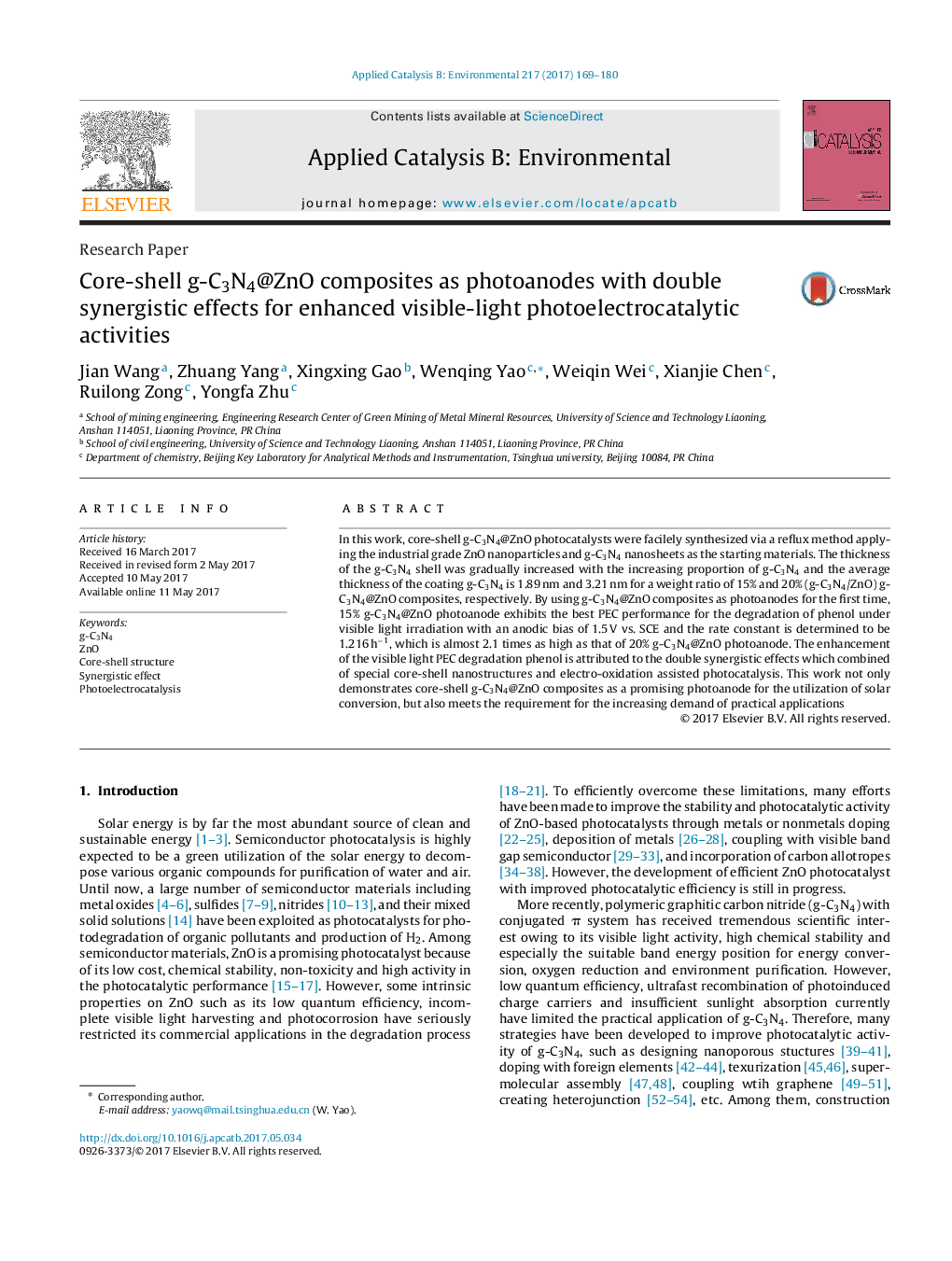| Article ID | Journal | Published Year | Pages | File Type |
|---|---|---|---|---|
| 6453930 | Applied Catalysis B: Environmental | 2017 | 12 Pages |
â¢Core-shell g-C3N4@ZnO photocatalysts were facilely synthesized via a reflux method at a low temperature.â¢The thickness of the g-C3N4 shell was gradually increased with the increasing proportion of g-C3N4.â¢The core-shell g-C3N4@ZnO exhibits enhanced visible-light performance of PEC degradation phenol.â¢The enhanced PEC performance was ascribed to the core-shell structure and electro-oxidation assisted photocatalysis.
In this work, core-shell g-C3N4@ZnO photocatalysts were facilely synthesized via a reflux method applying the industrial grade ZnO nanoparticles and g-C3N4 nanosheets as the starting materials. The thickness of the g-C3N4 shell was gradually increased with the increasing proportion of g-C3N4 and the average thickness of the coating g-C3N4 is 1.89Â nm and 3.21Â nm for a weight ratio of 15% and 20% (g-C3N4/ZnO) g-C3N4@ZnO composites, respectively. By using g-C3N4@ZnO composites as photoanodes for the first time, 15% g-C3N4@ZnO photoanode exhibits the best PEC performance for the degradation of phenol under visible light irradiation with an anodic bias of 1.5Â V vs. SCE and the rate constant is determined to be 1.216Â hâ1, which is almost 2.1 times as high as that of 20% g-C3N4@ZnO photoanode. The enhancement of the visible light PEC degradation phenol is attributed to the double synergistic effects which combined of special core-shell nanostructures and electro-oxidation assisted photocatalysis. This work not only demonstrates core-shell g-C3N4@ZnO composites as a promising photoanode for the utilization of solar conversion, but also meets the requirement for the increasing demand of practical applications
Graphical abstractDownload high-res image (260KB)Download full-size image
